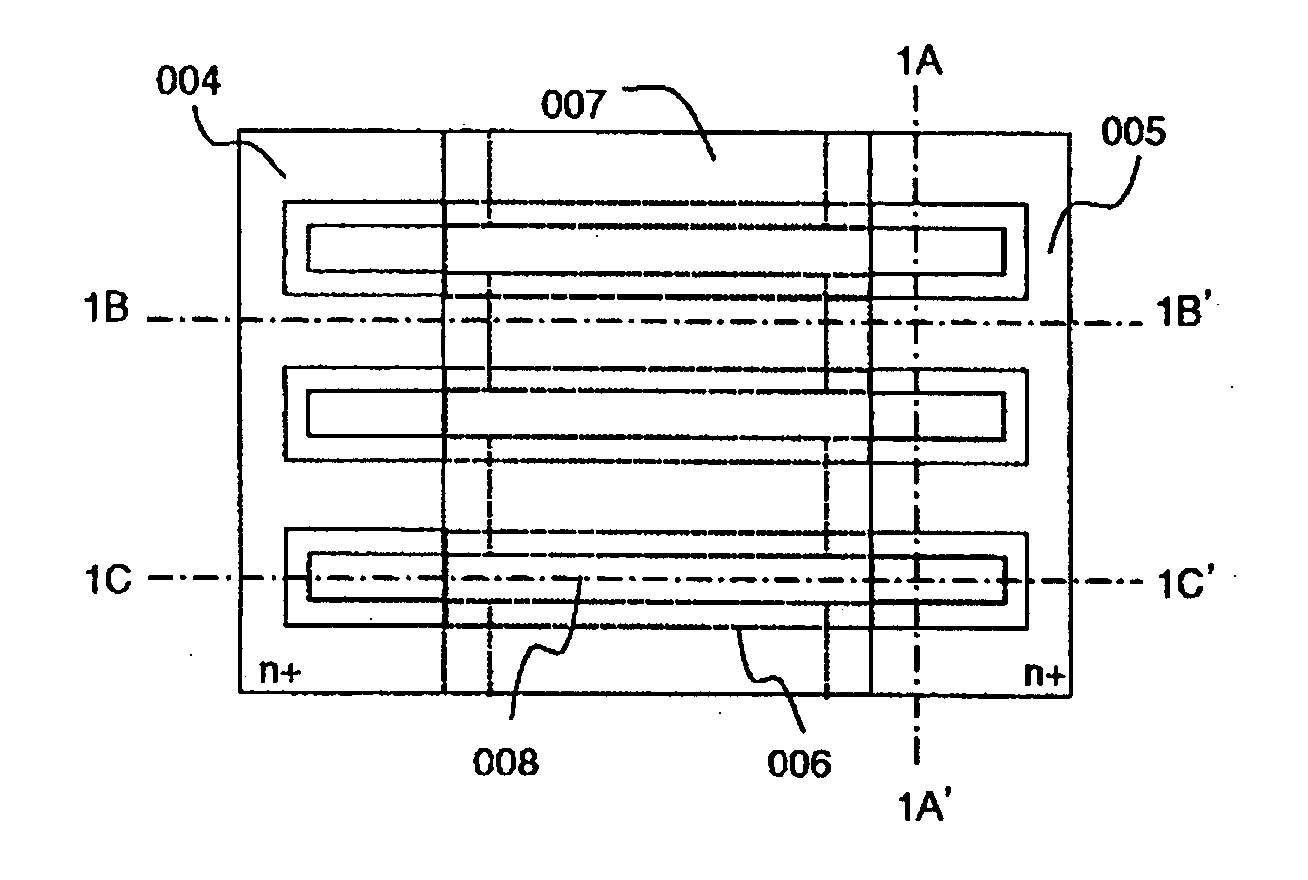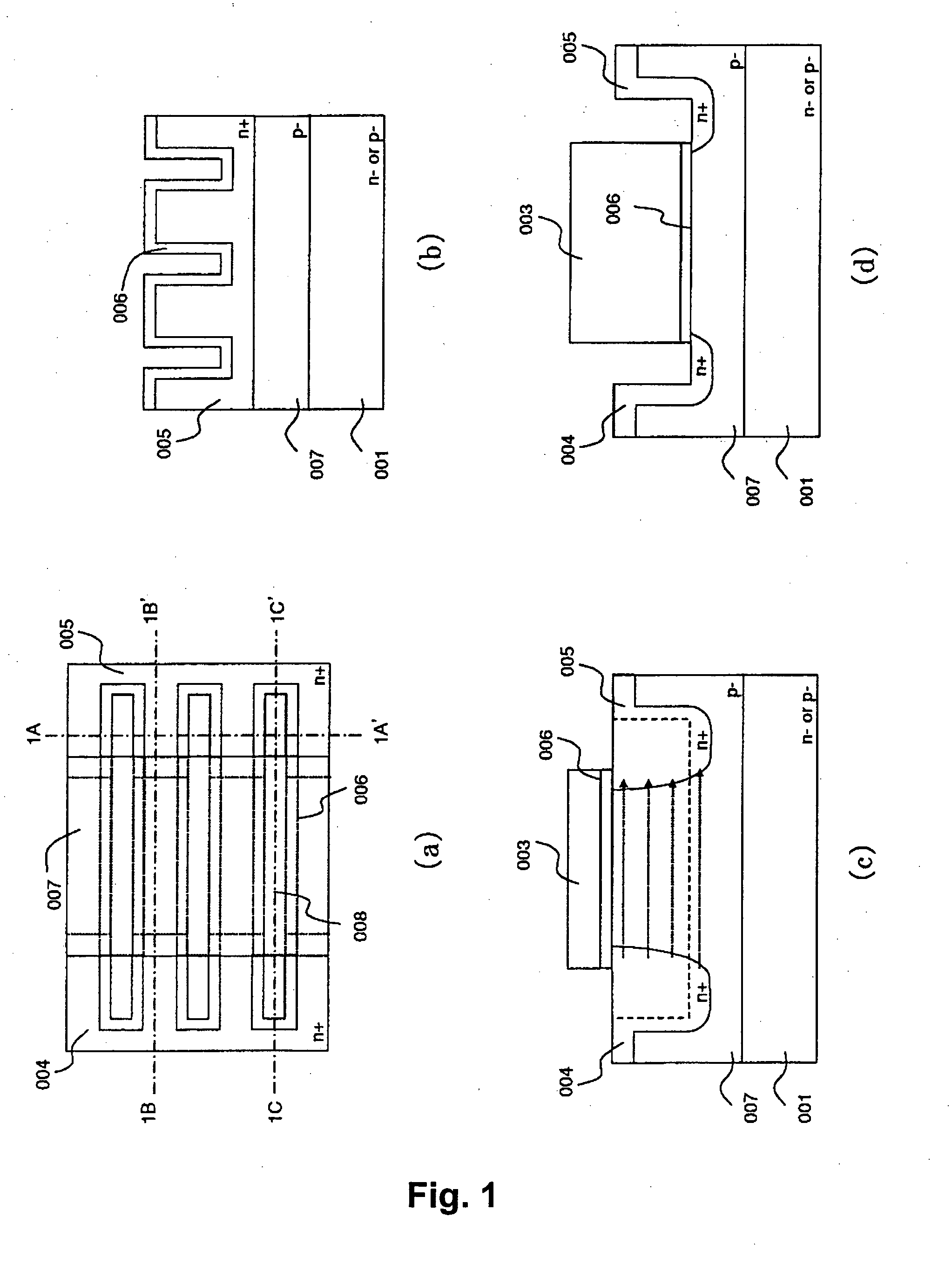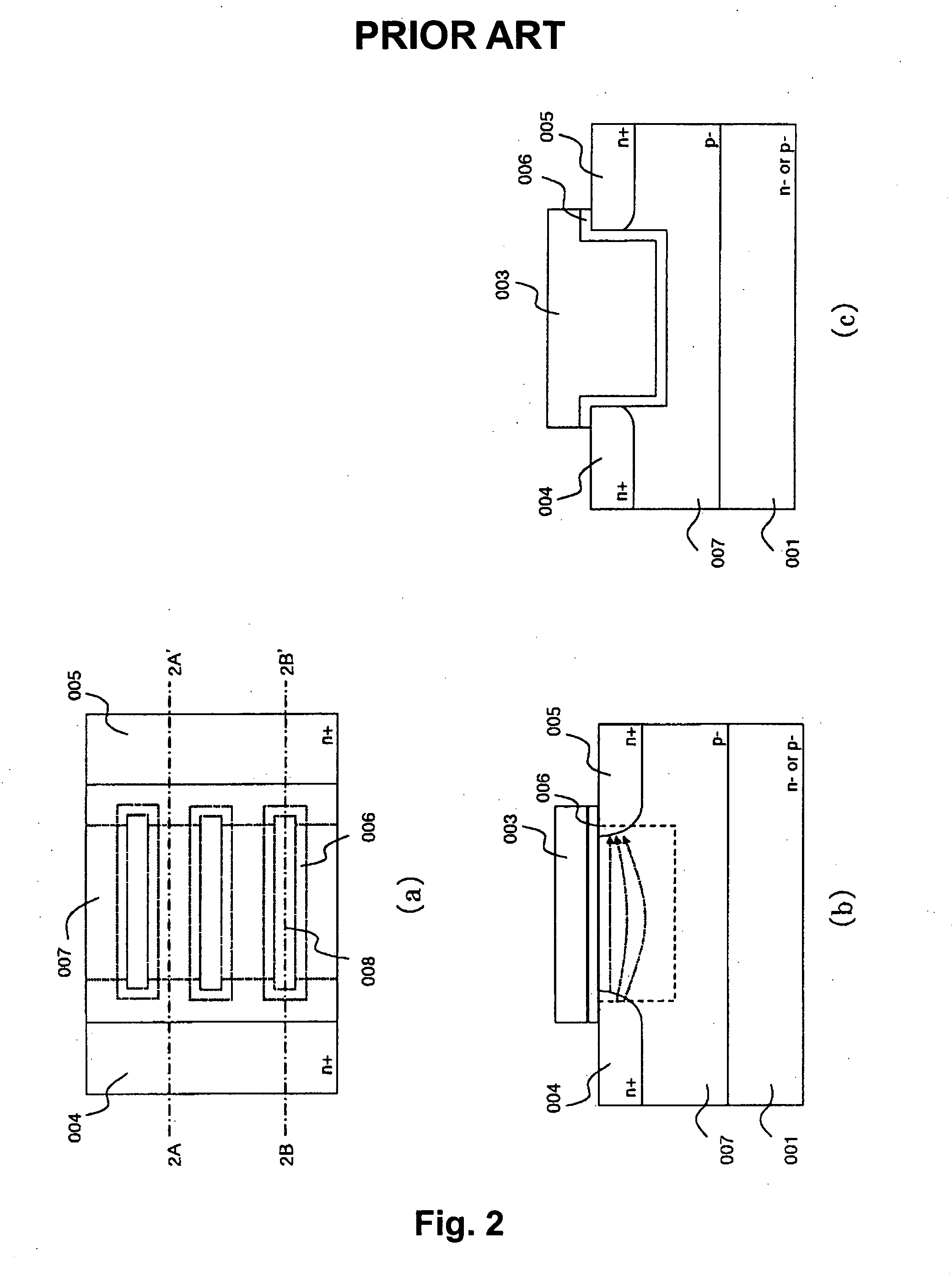Lateral trench MOSFET
a mosfet and lateral technology, applied in the direction of semiconductor devices, transistors, electrical devices, etc., can solve the problems of deteriorating current flow, insufficient resistance reduction, source layer and drain layer, etc., to achieve small resistance, large connection area, and low resistance
- Summary
- Abstract
- Description
- Claims
- Application Information
AI Technical Summary
Benefits of technology
Problems solved by technology
Method used
Image
Examples
embodiment 1
[0018]FIGS. 1A to 1D show Embodiment 1 according to the present invention. FIG. 1A is a plan view, FIG. 1B is a sectional view taken along a line 1A-1A′ in FIG. 1A, FIG. 1C is a sectional view taken along a line 1B-1B′ in FIG. 1A, and FIG. 1D is a sectional view taken along a line 1C-1C′ in FIG. 1A. In this lateral trench MOSFET, a first conductivity type semiconductor layer, for example, a P-type well layer 007 is formed on a high resistance semiconductor substrate 001. Here, the well layer 007 can be omitted by setting an impurity concentration of the semiconductor substrate 001 equal to that of the well layer.
[0019] Plural parallel trenches 008 are formed in the P-type well layer 007 as to reach a point midway in its depth. A gate electrode 003 is formed, through an oxide film 006, on a surface portion of the trench 008 except for the vicinities of both end portions thereof. With the gate electrode 003 as a mask, ion implantation is performed through spinning while holding a cer...
embodiment 2
[0020]FIGS. 3A to 3C show Embodiment 2. FIG. 3A is a plan view, FIG. 3B is a sectional view taken along a line 3A-3A′ in FIG. 3A, and FIG. 3C is a sectional view taken along a line 3B-3B′ in FIG. 3A. This embodiment is a modified structure of Embodiment 1. As shown in FIGS. 3B and 3C, second conductivity type offset layers 009 are formed by using so-calledsidewalls010. With such an offset structure, a higher withstand voltage can be attained in addition to the effects brought by Embodiment 1.
embodiment 3
[0021]FIGS. 4A to 4C show Embodiment 3. FIG. 4A is a plan view, FIG. 4B is a sectional view taken along a line 4A-4A′ in FIG. 4A, and FIG. 4C is a sectional view taken along a line 4B-4B′ in FIG. 4A. This embodiment is a modified structure of Embodiment 1, and includes what is called a DDD (Double Diffused Drain) structure. As shown in FIGS. 4B and 4C, ion implantation is performed only from the drain side and by thermal diffusion a second conductivity type high resistance layer 002 is formed on the drain side. Then ion implantation is performed to both sides to form the source layer 004 and the drain layer 005. This structure can attain a higher withstand voltage in addition to the effects brought by Embodiment 1.
PUM
 Login to View More
Login to View More Abstract
Description
Claims
Application Information
 Login to View More
Login to View More - R&D
- Intellectual Property
- Life Sciences
- Materials
- Tech Scout
- Unparalleled Data Quality
- Higher Quality Content
- 60% Fewer Hallucinations
Browse by: Latest US Patents, China's latest patents, Technical Efficacy Thesaurus, Application Domain, Technology Topic, Popular Technical Reports.
© 2025 PatSnap. All rights reserved.Legal|Privacy policy|Modern Slavery Act Transparency Statement|Sitemap|About US| Contact US: help@patsnap.com



